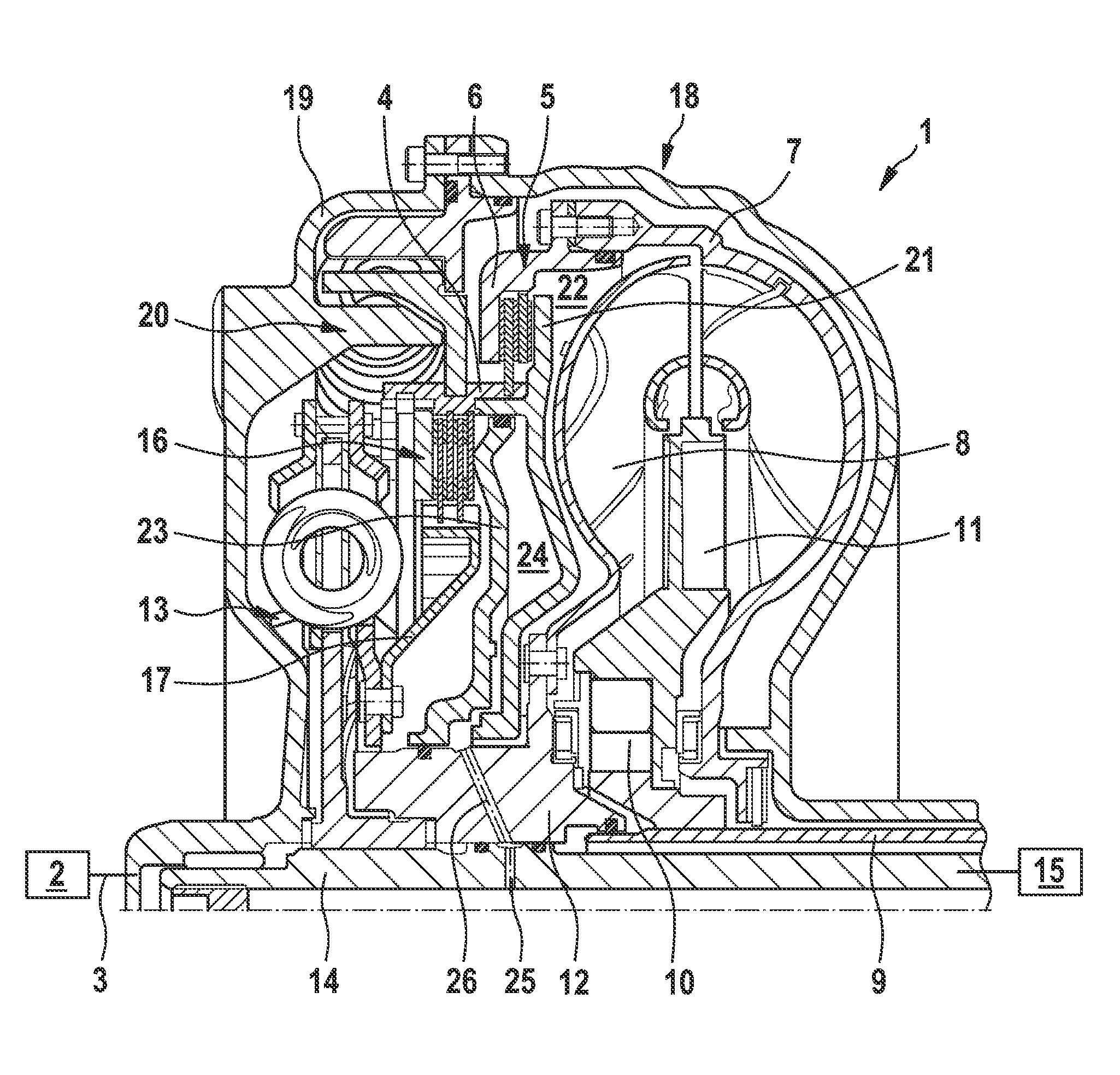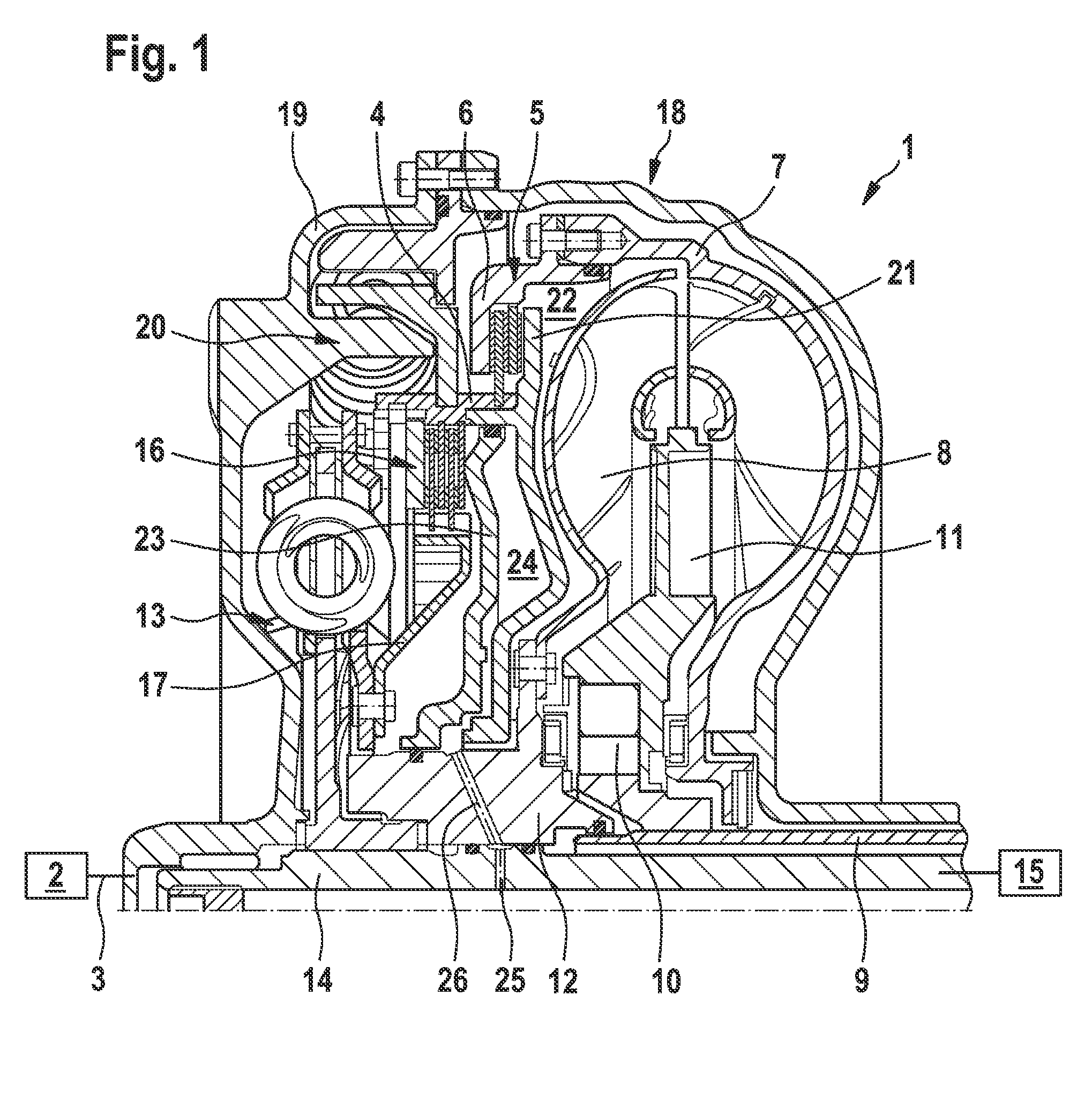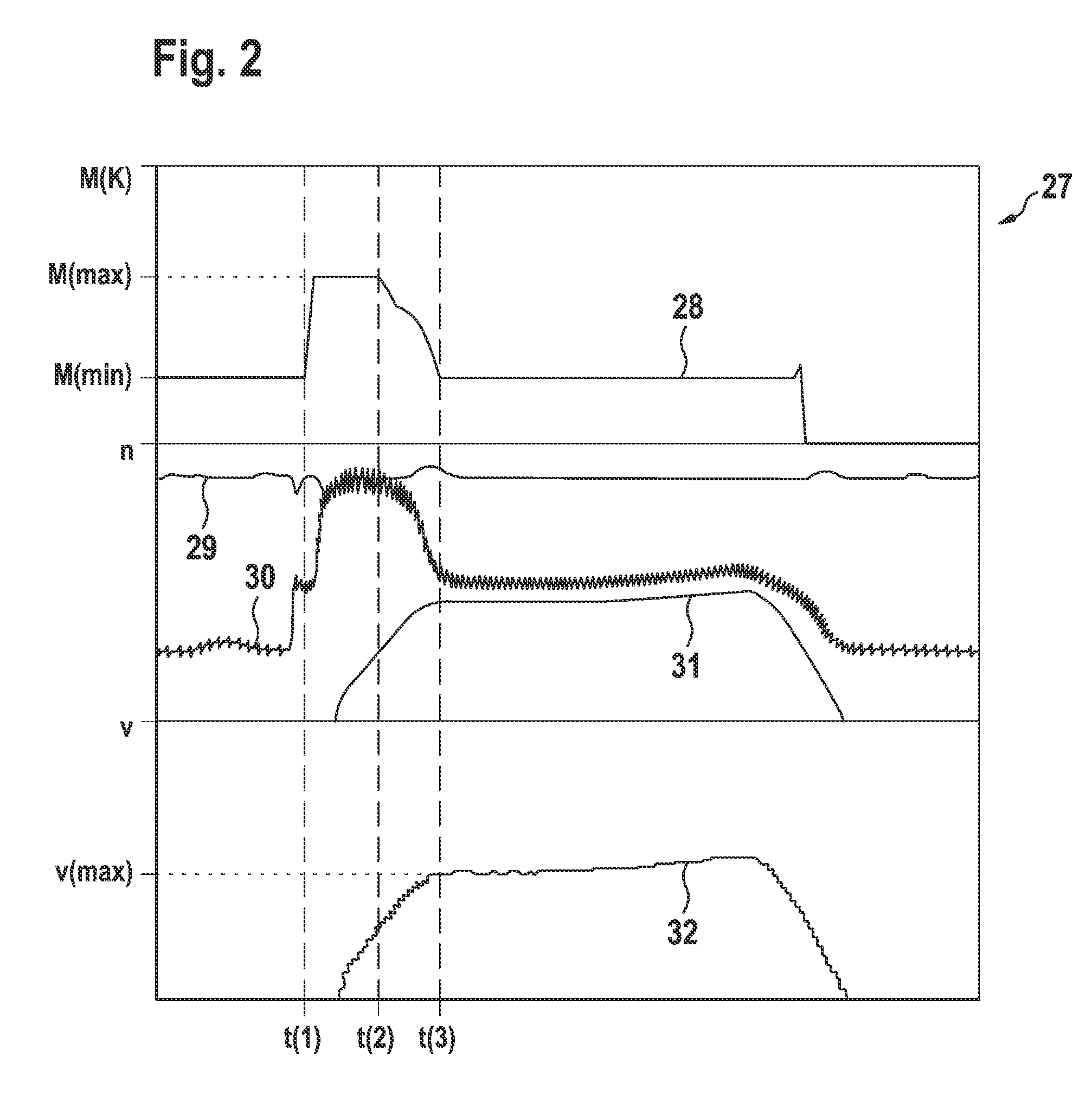[0007]Thus, it is an object of the invention to propose a drive train and a method for controlling a creeping process through the drive train, which provide reduced fuel burn and operation with an acceptable pre-determinable creeping velocity. Herein, in particular, energy savings through using a long start-up gear with a hard torque converter shall be implemented.
[0008]The object is accomplished through a method for controlling a creeping process in a drive train, comprising an internal combustion engine, a torque converter and an automated transmission, wherein the internal combustion engine and the torque converter can be decoupled from one another through a separation clutch, and the separation clutch is operated at least partially slipping during the creeping process. Through the method, the speed of the pump shell and thus of the turbine shell is decoupled from the combustion engine, so that a creeping velocity caused by a respective long gearing of the startup gear in combination with a hard torque converter can be converted to a lower pump shell speed to be transmitted to the pump shell through the slippage generated by means of the separation clutch between the crankshaft of the internal combustion engine and the pump shell of the torque converter. Thus, a speed of the combustion engine is simulated at the pump shell or generated, which speed is physically not adjustable at all at the combustion engine. This way, the torque converter can be configured hard in spite of a long gearing of the startup gear, without exceeding a desired creeping velocity of, e.g., 5 to 10 km per hour, which corresponds to a speed transmitted to a drive wheel through the transmission.
[0009]In particular, in combination with the properties of a torque augmentation of the torque converter when using a stator shell, a slip rate between the combustion engine and the torque converter can be configured at least in two stages. This means, that in order to start the creeping process, the separation clutch can be controlled to a maximum predetermined creeping torque, and the creeping torque can be controlled downward when a maximum creeping velocity is reached, while maintaining the creeping velocity. The control is surprisingly robust, since the load generated by the torque converter is also reduced as a function of speed. The creeping torque which is regulated downward still suffices to maintain the creeping velocity due to the torque augmentation of the torque converter.
[0010]Through the slippage rate of the separation clutch, which is adjustable over a wide range, the creeping velocity can be freely adjusted or preselected over a wide velocity range. The creeping velocity can, e.g., be adjusted as a function of a predetermined driving program, wherein respective driving programs can, e.g., be a sport, comfort, winter, or similar program. Alternatively or additionally, the creeping velocity can be individually adjustable by a driver, e.g., by means of a switch, slide controller or by a selection menu of a vehicle control. It is also advantageous that protective functions influence the creeping velocity, e.g., in order to keep the thermal loading of the separation clutch within limits.
[0011]Furthermore, the object is achieved by a drive train for a motor vehicle, comprising a combustion engine, a torque converter and an automated transmission with plural gears, and a separation clutch coupling a combustion engine and a torque converter, wherein with a separation clutch, which is completely closed during a startup process, with short gearing, this means, low gearing, and with a combustion engine operated at idle, a larger velocity is achieved than a maximum creeping velocity. By using a hard converter and / or a long gearing for the startup process, velocities can be achieved, which can only be controlled through the slippage of the separation clutch to an acceptable creeping velocity during idle of the internal combustion engine. Accordingly, the separation clutch is operated with slippage, in order to adjust the creeping velocity.
[0012]Thus, the creeping velocity can be set in a manner depending on the properties of the torque converter, so that the slippage of the separation clutch is adjusted through the torque converter as a function of the augmentation of the transferable torque. Thus, e.g., while maintaining a predetermined creeping velocity, the slippage of the separation clutch can be adjusted as a function of a characteristic of the torque transferable through the torque converter as a function of the speed of the pump shell, as a function of the speed of the turbine shell or as a function of the slippage between the two of them. Since the torque transferable through the torque converter increases with speed, the slippage of the separation clutch can, e.g., be increased through the torque converter with increasing transferable torque at constant creeping velocity. Thus, the speed of the combustion engine can be kept substantially constant during the creeping process, e.g., at idle speed.
 Login to View More
Login to View More  Login to View More
Login to View More 


